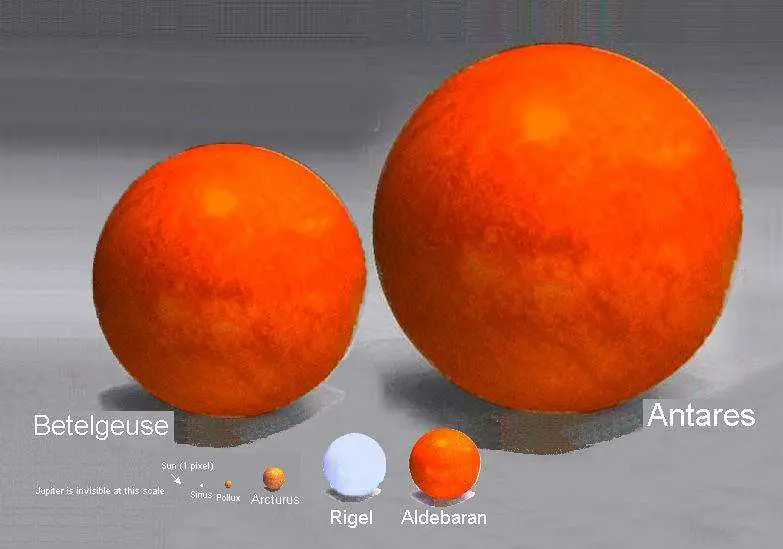Introduction
When we look up into the night sky, the awe-inspiring beauty of the stars captivates our eyes and draws our attention upward. These heavenly beings, which may be found all over the colossal expanse of the cosmos, are available in a wide range of sizes and magnitudes. Even while each star is exceptional in its own right, there are several that stand out due to the sheer magnitude of their size. This article will take you on a journey across space to investigate a question that has perplexed scientists for centuries: “What is the largest star in the history of the universe?”
A Matter of Perspective When It Comes to Stellar Dimensions
It is crucial that we have an understanding of how astronomers measure and categorize these colossal stars before we begin our search for the most massive star in the universe. Absolute magnitude, or an object’s inherent brightness, and spectral type, or the relationship between a star’s temperature and its chemical make-up, are two common methods for classifying stars. Nevertheless, the radius of a star is the most important factor that astronomers think about when trying to estimate its size.
Supergiant stars are the most massive types of stars, with masses that are several times greater than that of our Sun. They have enormous proportions, with radii that are hundreds or even thousands of times greater than that of our sun. The magnitude of these star giants is genuinely mind-boggling, which forces us to reevaluate our understanding of the cosmos and our position within it.
You have entered the Land of the Hypergiants.
When it comes to the various types of stars and their classifications, hypergiants are at the top of the list due to their enormous size. The great majority of stars are insignificant in comparison to these extremely rare and extreme stellar objects, which inhabit the upper echelons of the stellar magnificence scale.
Eta Carinae, a behemoth that can be found in the Carina constellation and is approximately 7,500 light-years away from Earth, is considered to be one of the most well-known hypergiants. It is estimated that Eta Carinae’s mass is greater than one hundred times that of our own star, the Sun, while its radius is greater than four hundred times that of our own sun. Due to this fact, it is one of the largest stars currently known to exist in our galaxy, which fascinates both professional astronomers and amateur fans.
Ongoing study is being conducted to determine the actual size of Eta Carinae’s planetary system. Its enormous star winds and strong eruptions have altered the surrounding nebula, which is known as the Homunculus Nebula. This provides more evidence of the hypergiant’s enormous size.
A Universe of Giants, Beyond the Eta Carinae Cluster
The search for the greatest star ever has pushed astronomers to investigate faraway galaxies in order to find stellar wonders that defy our understanding, despite the fact that Eta Carinae now holds the title for the largest star whose measurements have been confirmed.
Astronomers found a star in the constellation Scutum in 2012 and gave it the name UY Scuti. It was located approximately 9,500 light-years away. It is hypothesized that UY Scuti is a red supergiant with a radius that is more than 1,700 times larger than that of our Sun. Despite the fact that this measurement is theoretical and prone to inaccuracies, it stands as a testament to the astounding size of stars that exist in galaxies other than our own.
Astronomers utilize sophisticated observational methods such as interferometry and astrometry to refine measurements and increase our understanding of stellar titans in their quest to discover even more enormous stars. These methods are used in the context of the search of identifying even more massive stars.
The Constraints Impposed by Size
In spite of the fact that the hunt for the largest star could be exciting, it is essential to recognize the constraints and ambiguities that are inherent in the process of measuring these enormous cosmic objects. In order to determine the diameters of stars and other celestial objects, astronomers use a variety of indirect methods, such as spectral analysis and theoretical models. In addition, variables such as stellar winds and the environment around the star, as well as environmental factors in general, can make precise measurements difficult.
In addition to this, stars are not immobile entities. They vary with time, going through transitions in terms of mass, temperature, and physical dimensions. As a consequence of this, the star that is considered to be the largest at the present time might not continue to hold that title in the far future, adding another layer of difficulty to the process of determining the official winners of this cosmic competition.
The Great Tapestry That Is the Universe
Stars play a key part in the grand design of the cosmos, providing light where there was once just darkness and influencing the development of galaxies over time. The search for the largest star in the history of the universe continues to captivate astronomers, and in doing so, it draws attention to the vastness and variety of the cosmos.
These stellar giants test our conceptions of scale, pushing the frontiers of our understanding, and can be found anywhere from Eta Carinae to UY Scuti and beyond. Every new finding takes us that much closer to deciphering the riddles of the cosmos, yet it also serves as a reminder of how insignificant our role is within the greater scheme of things.
The pursuit of knowledge will definitely lead to the discovery of even more extraordinary stars, illuminating cosmic marvels that will strain our imagination and leave us in awe of the limitless wonders that lie in the vastness of space.
![]()
